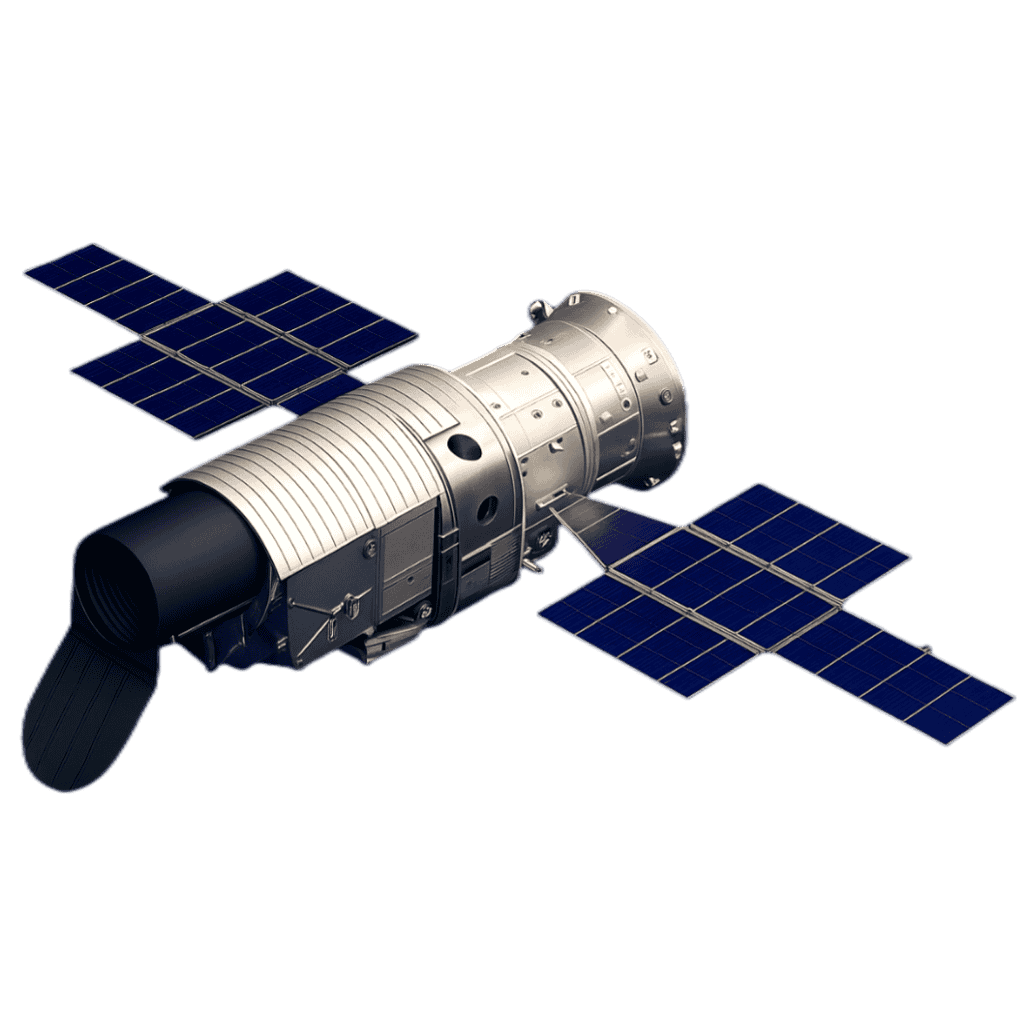Xuntian Space Telescope
Chinese Space Surveyor
Telescope for large-scale sky surveys near China’s space station

USPs
- 2-meter telescope with wide field of view
- Serviceable near Tiangong space station
- Studies galaxy evolution and dark matter
- Five first-generation instruments for multi-band imaging
- Field of view 300–350 times larger than Hubble
- Co-orbits with Tiangong for potential astronaut servicing
- 2.6-gigapixel survey camera for high-resolution mapping
- Can image up to 40% of the sky in a single survey
Major Milestones
- 2013-01: Project approved as part of China's space station plans, initiating development of the Xuntian Space Telescope.
- 2016-04: Concept formalized with a 2-meter primary mirror design, aiming for a field of view 300–350 times larger than Hubble.
- 2019-03: Completed initial design phase, confirming the telescope's five first-generation instruments and co-orbiting strategy with Tiangong.
- 2022-07: Reported near completion of components, with testing scheduled to begin by the end of 2022.
- 2023-11: Launch delayed from late 2023 to mid-2025, allowing further development and testing of the engineering qualification model.
- 2024-05: Launch further postponed to late 2026, with final assembly targeted for autumn 2025.
- 2025-03: Ongoing development of subsystems and instruments, with focus on the 2.6-gigapixel survey camera.
- 2025-07-17: Progressing toward final integration, on track for a late 2026 launch to study dark matter and cosmic evolution.
- 2026-12-21: Anticipated launch aboard a Long March 5B rocket from Wenchang Space Launch Center (projected).
- 2027-01: Expected to begin its 10-year survey mission, imaging up to 40% of the sky (projected).
Cosmic Portrait
Xuntian: China’s Cosmic Eye
Xuntian, also known as the Chinese Space Station Telescope (CSST), is China’s next-generation space observatory set to launch in 2026. Featuring a 2-meter primary mirror and a cutting-edge wide-field imaging system, Xuntian will conduct high-resolution sky surveys in ultraviolet, visible, and infrared wavelengths. Positioned in a similar orbit to the Tiangong space station, it will enable close collaboration with China’s crewed missions and offer potential for on-orbit servicing and upgrades.
- Design & Capabilities: Xuntian is often compared to NASA’s Hubble Space Telescope in terms of resolution, but it boasts a field of view that is around 300 times larger, allowing it to image vast areas of the cosmos in a single exposure. This wide-angle vision makes it ideal for large-scale sky surveys and population studies of galaxies and stars.
- Orbital Position: Operating in low Earth orbit near Tiangong, Xuntian will periodically dock with the space station for maintenance, calibration, or instrument upgrades—an engineering advantage that enhances its operational lifespan and scientific reliability.
- Scientific Goals: The mission is geared toward answering some of the most profound questions in astrophysics. Xuntian will study dark matter distribution, the large-scale structure of the universe, and galaxy evolution. It will also search for distant supernovae and active galactic nuclei, shedding light on cosmic acceleration and the nature of dark energy.
- Technology Integration: The telescope is equipped with a 2.5-gigapixel detector array and multiple scientific instruments, including slitless spectrometers and multi-channel imagers, which will enable simultaneous data collection across different wavelengths and scientific domains.
Future Impact
Xuntian is expected to operate alongside international missions such as NASA’s Nancy Grace Roman Space Telescope and ESA’s Euclid, contributing complementary data that enhances the precision of cosmic mapping projects. Its continuous sky survey will build one of the most detailed and expansive astrophysical catalogs ever assembled, aiding both professional astronomers and data-driven machine learning models in cosmology.
By enabling deep-field imaging and time-domain surveys, Xuntian will also play a crucial role in detecting rare astronomical events and tracking fast-moving celestial objects such as near-Earth asteroids and distant quasars. Its flexible observation schedule allows for coordinated campaigns with ground-based observatories and space telescopes around the globe.
Why Xuntian Matters
Xuntian is China’s ambitious step into deep-space exploration, mapping the cosmos with precision and expanding humanity’s vision of the universe.
As China’s flagship astronomy mission, Xuntian symbolizes a major leap in the country’s space science capabilities. It not only reflects China’s growing role in global astrophysics but also promises to deliver open-access scientific data to researchers worldwide, fostering international collaboration and discovery in the decade ahead.
Fun Fact
Xuntian can be repaired by astronauts, like Hubble!